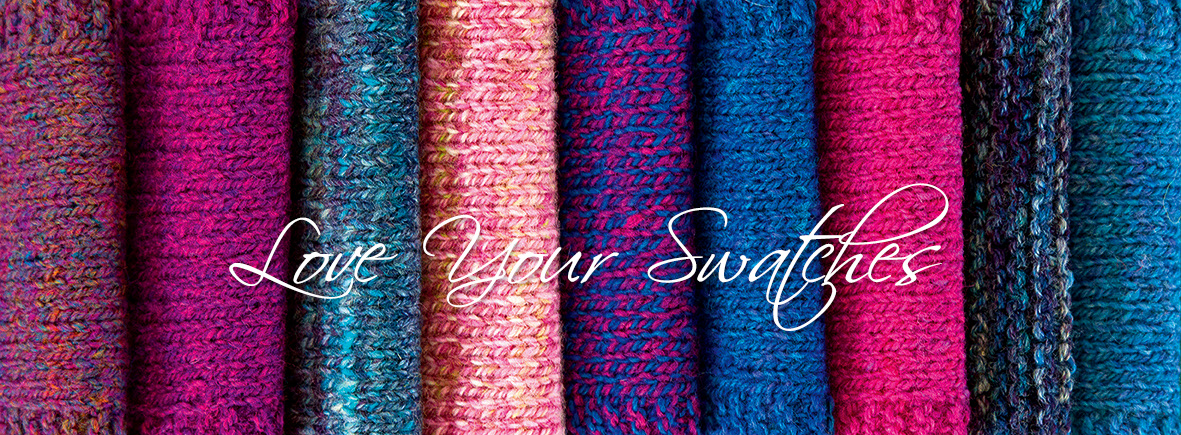
by Sue Allen, Ashburton, New Zealand
As published in Creative Fibre magazine, December 2016
Spinning your own yarn can be a lengthy process and knitting with commercial yarn usually involves paying money to acquire it. So a couple of hours spent knitting and measuring swatches is time well spent to avoid the frustration, disappointment and expense of having to rip back and re-knit an incorrectly sized sweater.
Recommended yarns and tensions are included on most knitting patterns and it is important to check that your knitting gauge is correct, otherwise your finished article may not be the correct size and shape. If you design your own garments and articles it is essential to know your gauge so that you can produce an item that meets your requirements.
There is plenty of information available about how to measure gauge and tension – the main message is, swatching is important. Not only are swatches useful for getting the correct tension, they can be used for other purposes:
- Measure tension or gauge – this is a biggie.
- Test samples for stitch patterns – to make sure that the stitch pattern is suitable, and so you can practice knitting them on a small area.
- Test samples for yarn types – definitely recommended for hand spun yarn.
- Check colour – yarn colour appears to change when different stitch patterns are used. Do you really want this shade of yellow for your scarf?
- Check colour combinations – do the colour combinations work for Fair Isle, stripes etc?
- A basis for estimating by weight and/or length how much yarn you will need – this is not an accurate method, but can provide an indication of having sufficient yarn for a project.
- Reference guide for knitting projects, especially for those who have numerous UFOs.
- A sanity-saving source of emergency yarn supplies (when you run out of yarn near the end of the last sleeve or if you haven’t any yarn left for sewing up seams).
- Touch sample – if you decide to enter your garment into a competition.
- Pilling test – rub the swatch with your fingers to see if it pills easily.
- Felting test – to check washability or if you want to felt your finished article.
- A record of the stitch pattern/s, eg Feather and Fan, shell stitch, travelling stitches etc.
- An archival record of the fabric used for your article (for knitting perfectionists).
Knit at least three test swatches using different sized needles. Use yarn samples taken from different portions of your yarn batch if you are using hand spun yarn. Don’t be stingy with the size of the swatches – bigger ones are easier to measure accurately. Block your swatch using the method that you will use on the article. Make sure that you measure accurately. A difference of one stitch in your sample could result in a finished garment being several centimetres too big, or too small.
- Attach a label to your swatch and keep it with the yarn for information. Include:
- Your name (in case you forget you knitted it).
- Project name, eg Joan’s Winter Sweater.
- Dates – when you knitted the swatch, and intended project finish date.
- Yarn type, eg two-ply, bouclé, art yarn, hand spun etc.
- Fibre type, eg Romney, alpaca, Merino/silk, cotton/linen etc.
- Needle size and composition, eg 5mm bamboo.
- Number of stitches and rows to measured length, eg 18st x 22 rows = 10 cms.
- Stitch pattern, eg moss stitch, purse stitch etc.
Result: happy knitters.